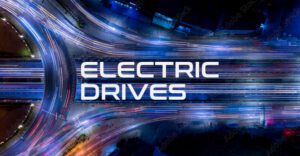- EV perceptions are divided, a widening gap exists between non-EV owners and actual users, reports show.
- Satisfaction high among EV adopters: 94% content, with minimal charging concerns reported.
- Incentives are crucial for adoption, government and business support is necessary amid policy uncertainties to encourage uptake.
New reports show that more must be done to curtail the gap in EV perceptions between drivers and would-be adopters
Technological improvements have catapulted EV adoption worldwide. More electric car models are hitting the market than ever before, offering consumers more choices and price points. Improved EV infrastructure is also making electric vehicle uptake far more feasible.
However, opinions on electric cars are increasingly polarised.
A recent report from CUPRA underscores the stark differences in perceptions between non-EV owners and those with EV experience. According to the survey, 63% of non-EV CUPRA owners are still deciding about making the switch. Yet, 70% of all drivers believe they will be driving a fully electric car within the next decade.
Satisfaction among those who have already switched to electric is high. An impressive 94% of CUPRA EV owners are happy with their decision. None express a desire to return to petrol or diesel cars. EV owners have minimal concerns about daily charging, with only 5% worried about it. Compare that to the 37% of non-EV owners who cite daily charging as a concern.
The disparity in EV perceptions is clear. Owners are aware of the daily practicalities and benefits that EVs bring. However, from the outside looking in, the process is mainly guesswork, informed by often negative media stereotypes.
Alfonso Martinez, UK Managing Director of ALD Automotive | LeasePlan UK, provided his insights from the heart of the industry:
“These findings mirror the conversations we’ve been having with drivers: that once you’ve made the switch to EV, it’s very hard to imagine going back to a petrol or diesel vehicle. Whether it’s the smooth and responsive steering, the quiet that comes with not having a combustion engine or knowing you’re producing zero carbon emissions, there’s so much to enjoy.
That’s why it’s so important to give people the opportunity to discover these benefits for themselves. Our research shows that most UK motorists have never had the opportunity to drive an EV, with just one in 10 drivers having ever sat behind the wheel of an EV. Without this first-hand experience, it’s easy to stick to what you know and avoid change.
So, how can we get more people in EVs? Well, the first is to give them a good incentive. Most drivers understand that EVs are better for the environment than petrol or diesel, but the perceived higher costs are holding them back.
As of now, there are several incentives funded by the Government that are helping to make electric driving more appealing to drivers. This includes lower Benefit in Kind (BiK) rates than ICE vehicles and also reduced VAT rates on public home charging. But this should go further. Introducing measures such as reducing VAT on public charging, from 20% to 5%, and aligning it with plugging in at home, would be a useful step in incentivising the case for switching to EVs – especially for drivers without off-street parking.
There also continues to be a degree of uncertainty around certain incentives such as VED rates which are set to rise from April 2025 and will be equalised across all cars including electric vehicles. This sends mixed messages to drivers at a time when the government is trying to encourage them to switch to battery power and could impact the adoption of EVs.
Businesses too have a role to play in supporting the transition to EVs. Introducing incentives like salary sacrifice is one way of encouraging employees to switch to EVs. Encouraging employees to opt for a salary sacrifice scheme offers a cost-effective path to ‘ownership’ and this financial support helps to break down the barrier of cost to EV adoption – opening the door for them to experience driving an electric vehicle.”
Accelerating the shift to EVs involves addressing misconceptions, providing tangible incentives, and ensuring more drivers can experience EVs firsthand. Fighting fear, uncertainty, and doubt is the only way to ensure EVs are the preferable choice for consumers. The disparity reported by CUPRA signals that we need to do more as an industry to address these concerns.
Upcoming events such as EV LIVE at Blenheim Palace provides drivers with an opportunity to test a variety of EVs around the grounds of Blenheim Palace. Experiences like these are crucial to furthering the adoption and understanding of electric vehicles.



